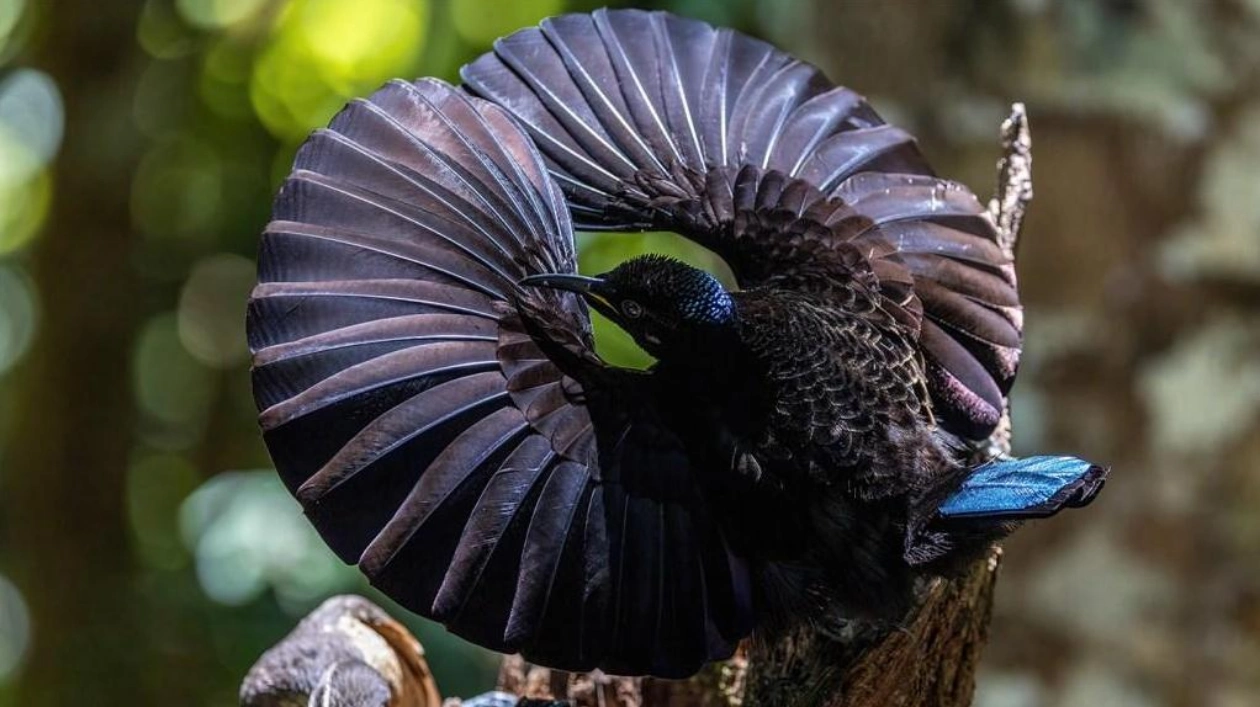A recent video showcasing the extraordinary wrist flares and feather noises of male riflebirds unveils the secrets behind their dazzling courtship displays. Males of the four Ptiloris species, native to Australia and New Guinea and part of the birds of paradise family, have long captivated both biologists and female birds with their elaborate mating rituals. During these displays, a male repeatedly spreads his dark, satiny wing feathers into a curved arc, rhythmically swaying his head and opening his mouth to produce a series of short, sharp thwacking sounds.
The mystery of how these males create such loud percussion has puzzled scientists. Thomas MacGillivray, a zoologist at the University of Veterinary Medicine in Vienna, explains that researchers initially believed the birds clapped their wings together, a method used by some other bird species to produce sound effects. However, MacGillivray and his colleagues discovered that a riflebird uses its beak to play its feathers like an instrument, a finding published in the September issue of the Biological Journal of the Linnean Society.
The team captured new footage of a male Victoria’s riflebird (Ptiloris victoriae) in action and examined specimens of other species. As the male swings his head, he periodically closes his beak, momentarily concealing his vibrant yellow throat lining. The beak then strikes the fanned-out feathers as it swings over them, creating a sound akin to dragging a stick against a picket fence. The arc of feathers that the beak drums against is a marvel in itself, curving strikingly inward like a cape curling forward. This curvature requires an exceptionally flexible wrist.
“In riflebirds, it appears as though the males are flexing like bodybuilders,” MacGillivray notes. However, the birds’ elbow-equivalents are hidden beneath other tissue, and it’s actually the wrist that bends so dramatically. A dead specimen of a Victoria’s riflebird could flex its wrist up to 237.1 degrees, while other Ptiloris wing specimens could bend even further. This level of flexibility is unparalleled among other birds, at least as far as we currently know.
Source link: https://www.sciencenews.org






